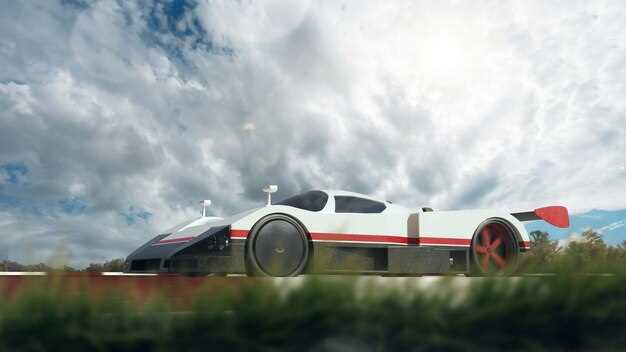
Creating a GT race car from scratch is a thrilling endeavor that combines engineering, creativity, and passion for speed. At the heart of this project lies the chassis, which serves as the foundational structure of the vehicle. A well-designed chassis not only ensures optimal performance on the racetrack but also enhances safety and stability during high-speed maneuvers.
In this article, we will guide you through the intricate process of building a GT race car, starting with the essential components, including the chassis. Understanding the role of the chassis is crucial, as it provides the necessary support for the engine, suspension, and other vital systems. We will delve into different materials and design philosophies that can be applied to create a lightweight yet robust chassis that meets the demands of competitive racing.
Each step of the construction process will be detailed, from initial design sketches to the final assembly. You will gain insights into the selection of materials, fabrication techniques, and the integration of performance-enhancing features. By the end of this journey, you will have a comprehensive understanding of what it takes to build a GT race car from the ground up, equipping you with the knowledge to embark on your own automotive project.
Selecting the Right Materials for Your Chassis
The chassis is the backbone of any race car, providing structural integrity and a platform for all other components. Choosing the appropriate materials for your chassis is crucial to ensure optimal performance, weight distribution, and safety. There are several options available, each with distinct characteristics that can affect your build.
Steel is a traditional choice for racing chassis due to its strength and durability. Mild steel is commonly used for its excellent weldability and cost-effectiveness. However, it is relatively heavy, which can negatively impact overall performance. For those seeking a balance between weight and strength, chromoly steel is an excellent alternative. This alloy steel is lighter and stronger than mild steel, making it popular among serious racers.
Aluminum is another popular option, known for its lightweight properties. Aluminum chassis can significantly reduce the overall weight of the race car, enhancing acceleration and handling. However, it requires specialized welding techniques and is generally less stiff than steel, which can compromise structural integrity if not designed properly.
Carbon fiber is becoming increasingly common in high-performance racing applications. Its high strength-to-weight ratio makes it an ideal material for reducing chassis weight while maintaining rigidity. However, carbon fiber can be expensive and requires careful engineering to maximize its advantages. Additionally, repair processes can be more complicated compared to metal chassis.
When selecting materials, consider the type of racing you will be participating in, as regulations may dictate specific material choices. Additionally, your budget and available manufacturing capabilities should also play a role in your decision. Ultimately, the right material for your chassis will depend on finding a balance between weight, strength, cost, and performance requirements tailored to your racing goals.
Designing the Chassis: Key Considerations for Performance

When embarking on the journey to build a GT race car, the chassis design is one of the most critical aspects to consider. The chassis serves as the foundation for the entire vehicle, influencing everything from weight distribution to handling characteristics.
Material Selection plays a vital role in chassis design. Common materials include steel, aluminum, and carbon fiber. Steel offers strength and durability but can add significant weight. Aluminum provides a great balance of weight and strength, while carbon fiber is lightweight and incredibly strong, but more expensive. The choice of material will impact performance, cost, and the overall feel of the car.
Weight Distribution is another key factor. An optimal weight distribution enhances handling, cornering, and overall stability. Ideally, the weight should be evenly distributed between the front and rear axles. This can be achieved through careful placement of components such as the engine, transmission, and fuel tanks. A lower center of gravity can further improve handling, so consider a design that allows for a flat chassis.
Geometry and Suspension design are crucial for performance. The chassis must accommodate the suspension system, which in turn affects not only ride comfort but also handling capabilities. Proper steering geometry will improve responsiveness, while adjustable suspension settings can optimize the car for various tracks and conditions.
Safety Features must also be integrated into the chassis design. Reinforcements, crumple zones, and the incorporation of a roll cage are essential for driver protection in the event of an accident. Ensuring that the chassis meets or exceeds racing regulations is imperative.
Finally, modularity can enhance the ability to maintain and adapt the chassis for future upgrades or repairs. A design that allows easy access to critical components will facilitate ongoing performance enhancements and repairs, which is vital in the competitive racing scene.
In summary, effective chassis design hinges on careful consideration of materials, weight distribution, geometry, safety features, and modularity. Each of these elements contributes to the overall performance of the GT race car, ultimately determining its success on the track.
Welding Techniques for Assembling Your Race Car Frame

When you set out to build a GT race car from scratch, one of the most critical elements is assembling the frame, which provides the structure and rigidity necessary for high-speed performance. Mastering welding techniques is essential for ensuring that your frame is both lightweight and strong. Below are some essential welding techniques to consider during the assembly process.
First, understanding the different types of welding methods is crucial. The two most common methods for race car frames are MIG (Metal Inert Gas) welding and TIG (Tungsten Inert Gas) welding. MIG welding is generally easier to learn and faster, allowing for a quick assembly of components. It is suitable for thicker materials often used in the chassis. TIG welding, while more complex, provides greater precision and control, making it ideal for thinner materials and critical joints that require a clean and strong finish.
Preparation is key to a successful weld. Ensure that all surfaces are clean and free from rust, paint, or grease. Use a wire brush or grinder to prepare the metal, as this will allow for better fusion and result in stronger joints. Additionally, fit-up is vital. Carefully align all the components before welding to avoid misalignment that could compromise the frame’s integrity.
When you begin welding, it’s important to use the right settings on your welding machine. For MIG welding, adjust the voltage and wire feed speed according to the thickness of the material. For TIG welding, establish the right amperage and gas flow to ensure a proper weld pool without excessive spatter.
Pay attention to your welding technique. A steady hand and consistent motion are vital for creating strong welds. For MIG welding, maintain a travel speed that allows the weld pool to penetrate adequately without burning through the material. For TIG welding, a ratcheting motion or steady forward movement is preferred to ensure that the filler metal flows evenly into the joint.
Vigorous testing of your welds will indicate their strength and durability. After assembling your race car frame, perform thorough inspections and non-destructive testing such as dye penetrant inspection or ultrasonic testing. These methods will help identify any weaknesses or flaws in the welds before subjecting your frame to the rigors of racing.
Finally, understanding the importance of post-weld treatment cannot be overstated. Once the welding is complete, consider applying a protective coating to the frame to prevent rust and corrosion. Sanding down any rough edges will also enhance the safety and appearance of your race car.
By mastering these welding techniques, you will be well on your way to building a robust and competitive race car frame that can withstand the challenges of high-speed racing.











